Up to this point in my life, I haven’t had the pleasure of exploring a lot of South America. I spent two weeks in Ecuador in 2018 and went to Aruba once in college, but that’s it. One of my best friends is from Argentina and moved back after the first year of my career. I hadn’t seen her in person since. So we set out to change that!
And of course our original plans were foiled by COVID and Argentina shutting its borders for almost two years. So we came up with a new plan and it’s finally happened!!! I paid for a flight with points and arrived in Argentina at the end of October and have been living it up ever since.
So let’s get into my impressions of Buenos Aires, what I learned, and all the mistakes I made so you can avoid them 🙂 .
Walkability
Buenos Aires is the most walkable city I’ve seen in a long time and that’s backed up by the numbers. Walk Score gives BA a 99/100. I have no idea where that other point should come from, but that’s awesome. There are sidewalks absolutely everywhere along with walk signs, and I had no trouble using my favorite method of transportation: walking to go all over this city.
Walking around Buenos Aires also has an added benefit that it’s BEAUTIFUL and the architecture is the most varied I’ve ever seen. The architecture here is almost entirely influenced by European styles, specifically the Italian and French styles of Colonial, Art Deco, Art Nouveau, Neo-Gothic, and French Bourbon. Every block there’s something new and beautiful to look at.
Not to mention the amount of (HUGE!) trees and green spaces. I also haven’t seen trees as tall as the ones in Buenos Aires outside of national parks in the US. They’re massive, often the size of the skyscrapers they’re next to. There are also parks every few blocks it seems, where I loved to sit and watch the tropical birds.
Transit
The Subway/Subte
Transit in Buenos Aires is also top notch. There are subway stops all over the places with trains that come every 3 minutes. The subway is called Subte (literally “subway“) and indicated with yellow Subte signs.
The lines are easy to understand as they’re named with letters (A, B, C, D, E and H) and colors (similar to NYC). The direction of the train is indicated by the name of the last stop so look out for that to make sure you’re going in the correct direction.
The Subte costs $42 pesos ($0.15 USD) for the first 20 trips you take in a month and gets cheaper from there:
1 a 20 viajes: $42 pesos
21 a 30 viajes: $33.60 pesos
31 a 40 viajes: $29.40 pesos
41 viajes en adelante: $25.20 pesos
I wasn’t using the subway that much so I kept at the $42 pesos/$0.15 USD amount, which is just fine with me 🙂 . I put $500 pesos ($1.86 USD) on my card at the beginning of my 5 week stay and didn’t need to add more the whole time I was there (though like I said – I mostly walked places).
However, paying for the subway can be tricky because there is currently a shortage of metro cards. A few locals told me it was because there was a shortage of chips that go in them. There also isn’t a way to pay for the subway with cash since the entrances just have card readers.
I was lucky that the friend I was visiting had another card she could lend me and I’m curious how other tourists usually deal with this. I did see a few locals asking others with cards to tap multiple times for them and then they would hand them cash in exchange. Whatever works I guess 🙂 .
If you’re lucky enough to get a card, you can fill it at a kiosk in the subway station, but only with cash. Don’t be like me and try to put your credit card in there – luckily it was ok, but I felt like an idiot 🙂 . Once your card has money on it, you go up to the turnstiles and place the card on the blue pad on the top of the turnstile. Some of them have an indicator that tells you the remaining balance and you go through – but some don’t 🙂 .
For those, you can either try to walk through (and once again be embarrassed if it hadn’t worked yet like I experienced) or listen for a low “click” that indicates the turnstile is open and you can walk through. This is another way I messed up – I thought since one of the turnstiles didn’t indicate anything, that it was broken and went to another one, so someone got a free ride that day. You’re welcome 🙂 .
Anyway, I absolutely LOVE the subway in Buenos Aires. Not only because the trains come every 3 minutes so there’s no waiting around or people shoving their way on, but also because it’s super clean – but better than NYC, which looks like it’s held together by duct tape (I’m allowed to rag on my former home right 😉 ).
However, one thing that I found a little confusing while on the train though is that some have announcements for the stops as well as written announcements, but some do not 🙂 . And at times, even when they do, the written announcements are off by a station. So if you’re getting close to your stop, make sure to look out the window at the signs in the station you’re approaching and get out accordingly. Subte is open 5:30am-11:30pm Monday-Friday, 6:00am to midnight on Saturdays and 8:00am to 10:30pm on Sundays and public holidays.
The Bus/Bondi
However buses (apparently known as colectivos or bondis locally) are 24/7, 365! They also come every 3 minutes during weekday daylight hours and barely less frequently at other times.
When you get to a bus stop don’t pay attention if there is a board saying when the next bus is coming because they’re not accurate 🙂 . Maybe the transit authority stopped keeping them up since the buses are so frequent. I have no idea 🙂 . To make sure a bus knows you’re waiting for it you put your hand out like you’re trying to get a taxi.
Getting on a bus is similar to the subway in that you enter and put your Sube card on the pad. However, you then need to tell the bus driver where you’re going and they’ll select the correct fair for you. You can tell them the name of the cross street you’re getting off at.
I wasn’t paying attention when getting on the bus so I don’t know how much I was charged, but I asked a friend and they said that the most you can pay is $28 pesos ($0.10 USD) for the farthest fare. Sweet!
The buses also come every few minutes and are on every street corner it seems. When your stop is coming up, you have to push the orange buttons that are on the handrails next to the bus exit doors. Then you step off and continue your adventure!
Taxis
There are an abundance of yellow cabs in the city. One caveat though: they ONLY take cash. If there’s a light on in the front of the cab, (usually a red rectangle with white in the middle) that means the taxi is available.
You hail a taxi the same way as in NYC – if you see one available, stick your arm out and climb in. Also similar to other large cities, going to a nearby large avenue increases your chances of finding a cab quickly.
Once you climb in, you tell them where you want to go and there’s a fare counter in the windshield that will increase throughout the trip until you reach your destination. I was told that taxis aren’t tipped here…but I tipped anyway 🙂 . I took a cab across the whole city at midnight and it cost 1458 pesos or $5.50 at the time. Compared to public transit, it’s expensive, but compared to the cab fares I’m used to, I think it is very reasonable.
Rideshares
Argentina rideshares have a contentious background, which I’ll go into in detail in my next post about the rideshare that locals use (Cabify) and the taxi drivers’ nemesis, Uber.
Basically taxis hate Uber and according to online accounts, have led to uncomfortable and seemingly dangerous situations, such as confrontations with taxi drivers. However, as I will get into in the “Safety” section below, the regularity of these accounts might be overblown.
When I landed in Argentina, I didn’t have pesos for a taxi and I was wary of trying a new app for the first time when landing in a new country alone, so I turned to Uber. I ordered a car when I walked out of the airport and a taxi driver came up to me, assuming I was waiting for an Uber (and not Cabify) while looking at my phone.
I guess it was a fair assumption, but Cabify works in several countries so it could have been that 🙂 . Anyway, he tried to talk me into his car instead because “Ubers are bad”. Fair point, but trying to verbally force me into your car is obviously not the way to get that outcome. I pretended I didn’t speak Spanish and tried to get away from him. After a bit, I think he realized he was making me uncomfortable and luckily left me alone.
Then my Uber pulled up and I got in without further incident. The other taxi drivers nearby didn’t approach us (as the online rumors would make me think they would). I took an Uber into the city and it was 5,310 pesos on my credit card, which (as I’ll get into below) is a much worse rate and cost me $35.40 instead of the $19.81 it would have been with converted cash, but that wasn’t the end of the world.
I got to my destination quickly, thanked the driver in Spanish and left. It was a normal Uber experience. Since then, I’ve used Cabify with my friends several times and am planning to use it to get to the airport as well and pay in cash.
I learned from poking around the apps that both Cabify and Uber have an option to change your payment option to “Cash” so I can get that preferred “blue” rate on my return airport ride.
Communication
When I landed in Argentina I turned on my phone and just like in Thailand and México before this, quickly got a pop up from my cell provider, Google Fi, that they’ve got me covered. I love it 🙂 .
While living in Argentina, I learned something interesting: most businesses here are best contacted over What’s App text instead of calling them. I hope the US adopts this because I hate calling people on the phone 🙂 . What’s App text is how I set up my dentist appointment in Buenos Aires and also how I got food delivery from a local restaurant.
Heads up that a Buenos Aires mobile phone number looks like this: +54 9 11 5345-5198
+54 = Argentina country code
9 = Mobile phone code (a landline won’t have this number included at all)
11 = Buenos Aires city code
And then the rest of the number follows. Also within Buenos Aires addresses it says “CABA,” which is the name of the city for Ciudad Autónoma de Buenos Aires (Autonomous City of Buenos Aires)
Safety & Inclusivity
Before I go to another country, I also like to look into any tips people have based on staying safe as a solo female traveler. Well when researching Buenos Aires, I found something interesting. According to multiple travel blogs they said to NEVER have your phone out because people will snatch it right out of your hand IMMEDIATELY.
I told that to my friend who lives here and she laughed because it was so ridiculous. She said you have to watch out just like you do in NYC, it’s no different. And after living here for over a month, I completely agree that this warning was overblown. I have my phone out all the time just like the locals do, and no one has so much as lunged at my phone – even when I walk around alone at night through multiple neighborhoods.
Obviously these things can change based on the areas of a city and Buenos Aires is enormous, but I was comforted to hear and later see for myself that some of these things can be overblown.
I was also pleasantly surprised to see that unlike in any major US city, I haven’t been harassed on the street at all in Buenos Aires. I also, unlike in NYC, felt completely comfortable running alone here. And I cannot say that about a lot of the non-major cities in the US either.
As for inclusivity, while I was in Buenos Aires, they had their Pride Parade and over 300,000 came out to celebrate. I also saw a few pride flags around the city and personally felt comfortable as a queer black woman living here and being alone 99% of the time.
Money
Argentina is going through an economic crisis, which has been marked with extremely high inflation. The country is trying to get the issue under control, but in the meantime, it presented a challenge that I haven’t encountered while traveling before.
In Argentina the locals all use their credit card for everything because delaying a payment in that way obviously helps when inflation keeps climbing. However, as a non-local who has a US credit card, if I used my credit card, I would be given the “bank rate”, which while I was in Argentina was 150 pesos to $1 USD when I arrived and 169 pesos to $1 USD when I left.
So that’s what I would get if I used my card. However, I brought $500 USD with me to Argentina at my friend’s suggestion, and she took me to Berlin Cambio, a fantastic exchange place. There you get the “blue rate”, which was 263 pesos to $1 USD when I arrived and 338 pesos to $1 USD when I left. So in essence, just by taking that first rate (263 instead of 150), I turned $100 USD into $175 USD in buying power.
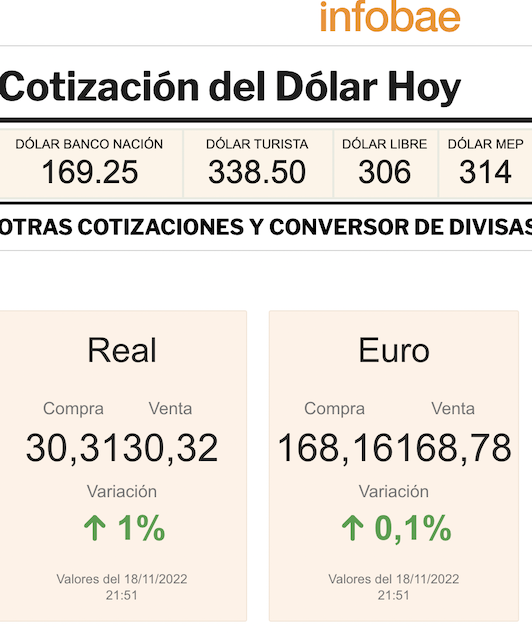
As for getting around the city, everywhere accepts cash and some places accept cards. When dining at a restaurant it’s standard here to tip 10%. Also heads up that if you do use your card in a shop that accepts it, you might need your passport to do so. Locals always put their card and their ID in the check case for the wait staff.
One heads up: on some restaurant checks you might be “cubierto” with a small fee. That’s a charge for what’s provided to each patron, such as a bread basket. It’s not used as tip so be sure to tip on top of it.
Once again, the urge to "make it rain" is almost overpowering, but I must resist🤣😬🤑 pic.twitter.com/Jb15pIiLPU
— A Purple Life (@APurpleLifeBlog) October 28, 2022
Time & Climate
Once again, World Time Buddy saved my ass. While I was in Argentina, most of the US went through their bi-annual time change. As a result, the weekly calls I had with my loved ones had to be moved on my calendar (since I’m in the country that doesn’t do dumb time changes, it didn’t edit itself obviously).
Also, Argentina is in the Southern Hemisphere so they experience the opposite seasons as the US. I arrived here in late October – Argentinian Spring! It got hotter as I stayed there, but it wasn’t wildly hot.

The above are the general climate averages from pre-2015…so add about 7 degrees to each side of that to get the climate I experienced here in 2022.
One heads up, while I was in Buenos Aires alone, I got an alert on my phone: a yellow storm warning. As a result, I didn’t go outside that day. However, when I asked my friend about it she said that wasn’t a big deal for me – that it’s usually for cars because they have lowered visibility and are at risk of hail messing them up, but that since I mostly walk around that I can go out, but should go home when it starts raining. So just a heads up in case that happens to you as well.
Nature
Buenos Aires is a wonderfully green city. There are enormous trees everywhere and parks on almost every corner. In addition to these green spaces, I was told that Carlos Thays was responsible for designing 69 squares and public boulevards in Buenos Aires and planting over 150,000 plants and trees in the city. He was the Buenos Aires Parks Director from 1891 until 1913 and also created the city’s botanical garden, which is now a global center for South American flora and fauna studies.
Buenos Aires is known for the changing colors of its trees and he is responsible for that as well. Locals told me that almost every month a different color tree blooms and takes over the city. In October when I arrived, it was the bright purple Jacaranda (I felt very welcomed 😉 ) and in November the pink Lapacho took over the landscape.
As for the Jacaranda, the tree isn’t just beautiful, but it’s also very useful in the fight against climate change. The Jacaranda tree is one of the largest consumers of carbon dioxide and each tree can process 1,832 kilograms of CO2 per year. A typical, fully grown tree can absorb around 21 kilograms of carbon dioxide per year
No Screens or Bugs
This is an anomaly I cannot figure out. Buenos Aires doesn’t seem to have any flies. I don’t know if it’s the wind (aka “buenos aires” 😉 ), but it’s not always windy and I’ve never seen a fly here. Also, my friend and her friends whose apartments I visited, always had the windows or patio doors fully open and no flies ever came in. Barely any mosquitos either – I think I saw 2 tiny ones fly into the apartment the whole 5 weeks I was there. HOW?!?! I thought no screens in a hot spring would be challenging, but it was totally fine.
Outside Noises
I like to explain new noises you might hear outside because I wish I knew this when going to new countries 🙂 . So here are a few things you might hear and what they are. One is a loudspeaker yelling in the distance. My default was thinking that it was like the gas truck in Ecuador, but instead it’s a truck that takes your furniture away. Helpful!
The other thing you might hear randomly are a lot of dogs barking together. Well, I learned that Argentina has the most pets per capita and prefers dogs with 80% of the households in this country having a pet, 66% of which are dogs. That’s a lot of dogs!
And people in Buenos Aires are busy so they often have a dog walker come to their house to let their pet get some exercise and when the dogwalker goes to get an additional dog, they leave their MANY dogs tied up on the street, which is where the lots of barking for a minute or so comes from. Here’s an example of one of the smaller packs I’ve seen a dogwalker walk:
Along with the love of pets, almost all apartments have nets around their balconies to keep pets and children from going through the balcony fence holes. I originally thought the nets were to keep birds out since the windows are always open, but nope ! I guess I just have birds always on the brain 🙂 .
Anyway, given the number of dogs, I would say that Buenos Aires has “NYC level” of dog poop on the sidewalks. However unlike Manhattan, (especially the subway), BA doesn’t smell like piss and shit 🙂 …can you tell why I moved away from NYC 😉 ?
Language
Argentina is known throughout the Spanish speaking world as an outlier. This is because after Argentina was ‘conquered’ by Spain, it later saw a large influx of Italian immigrants. The result is a very unique sounding Spanish. For example, these Spanish sounds are completely different in Argentina:
- Y/LL = zh/sh, EX. Yo = Zho, Calle = Cashe
- D when btw vowels = slurred or eliminated, EX. Qué copado = Qué copa-o
- S = aspirated, EX. la posta = la pohta
I got these examples from the below amazing YouTube video, but to explain them further, “Y” and “ll” in Spanish usually sound like the English “y” in “you.” However in Argentina, it sounds more like the English “zh” and “yo” sounds like “sho” so “calle” sounds like “cashe” for example.
In addition, “d” sounds different here when it’s between vowels. It’s either slurred or disappears completely. And finally, “s” in Argentina is aspirated so it can sound like it’s not there at all 🙂 . “Comó estas” can sound like “Comó etah.”
I think of myself as a prepared person, but world travel always seems to reveal something more I should have done. So here are the things I did to prepare for this trip language wise and things that I wish I had done as well in hindsight:
What I did to prepare:
- Learned Spanish (in México)
- Learned the rules of VOS (instead of TÚ)
- Listened to Argentinian Podcasts
- Listened to Argentinian FilmTubers
What I wish I ALSO did to prepare:
- Watched the above video explaining the Argentinian accent
- Practiced using VOS while speaking
- Practiced more using USTED while speaking
I hope that helps you avoid some of my challenges here 🙂 .
Accent Confusion
Despite listening to podcasts and speaking with my Argentinian friend weekly for months, I wasn’t ready for the Argentinian accent described in the video above while I was “in the wild.” What messed me up in my dentist’s office visit was that their first question to me revolved around “Apellido,” which was pronounced “apezhiho” here because of the first two rules above and I was lost from the start 🙂 .
However I was also confused because in the Spanish-speaking world, most people use two apellidos, the first being their father’s first surname, and the second their mother’s first surname: (e.g. the surname of the children of Juan García López, married to Carmen Pérez Rodríguez, would be García Pérez).
Here, married women use either the surnames they were born with or add their husband’s first surname to theirs so Carmen Pérez Rodríguez could also be known as Carmen Pérez de García or Carmen Pérez Rodríguez de García. In this particular case, she could also be referred to as la señora de García. However most women continue to use their own surnames. So I was confused by multiple things 🙂 .
Informality
Buenos Aires is a very informal city. I beat myself up by knee-jerkingly responding to a doorman with “y tú” only to be told that the reason he would be confused is not because I was rude and didn’t use “usted”, but because I didn’t say “y vos?” Hence my wish that I had practiced vos more, which is used in Argentina instead of tú.
Greeting
When meeting people, “Hola!” is the usual greeting, but what I wasn’t prepared for is that you then go into a half hug and kiss a person’s right cheek. Younger people seem to just touch their cheeks together and make a kissing noise instead of all out kissing people, but I don’t know if that’s additional informality or a pandemic change. When leaving, “chau” is usually what’s said. I was surprised this is spelled differently than the Italian “ciao!”
Unique Argentine Words
I was also surprised that Argentina has a lot of Spanish they use that other countries don’t. I took notes when I learned these words (from my spreadsheet 😉 ) below, but I also found an infographic with additional ones in case they’re helpful to you.
Medical
While in Argentina, I wanted to continue exploring how Medical Tourism (getting medical work in other countries), was around the world. So I got a dental exam and cleaning (full information in the post below) and I bought lots of medicine I needed from the pharmacies.
Dentists
As for the dentist, the only piece of information I don’t think I included in there was that the dentist mentioned that there is no fluoride in the water in Buenos Aires so I should choose a toothpaste with fluoride while here.
Pharmacies
Or “Farmacias” 😉 . I am still debating if I’ll do a whole post about this, but if I don’t get around to it, I want other people to know how to use the pharmacies here (and avoid my embarrassing mistakes 🙂 ). I first visited the large Farmacity chain to see if they had a Méxican medicine that helped a lot with my asthma.
So this is what happened. I entered the Farmacity, went to the back where the farmacia was located, took a number, waited for my number to be called and then asked the pharmacist if they had a specific medication. They asked if I had an example so they could see the dosage. I luckily did and the first Farmacity said they don’t have that Méxican medicine, but that the next Farmacity 5 blocks away did.
So I went to the next Farmacity, took a number, went up to the pharmacist and they handed me the medicine in a blue zipped bag with a scanner code on it. The pharmacist then told me to pay at the front of the store. So I joined the regular line to wait, got up to the cashier and showed them my pharmacy bag.
They then asked if I had “documentos,” which I learned from my dentist adventure, is an ID in Argentina, which I do not have. I told them that and they had to move to another checkout counter, told me the amount, I paid them and I left with my medicine.
And then of course right when I got home I discovered this amazing website called Pill In Trip that tells you the local name of a medicine you take in another part of the world. I paid $37 USD in Argentina for a Méxican medicine that costs me $300 in the states and $3 in México, but I then learned that I could have bought a generic, local equivalent instead based on the info on this website. So that’s what I’m going to do next time 🙂 .
Food & Wine
I knew Argentina for a few things: wine, meat and pasta. I was told that it has the best pasta next to Italy and was excited to see if that was true. However my biggest surprise about Buenos Aires was the food I love most: The French Toast and the Buenos Aires style pizza!
Delivery
Outside of takeout Buenos Aires also has a lot of delivery options. Almost every shop seemed to deliver on the PedidosYa or Rappi app and motorbikes with their logos are always going up and down the street.
Groceries
One thing that was definitely true is that wine in Argentina is delicious and wildly cheap. I got yummy bottles for dinner for $1-2 USD. One wine that I hadn’t seen before that’s local here is Torrontés, which is similar to Riesling and Moscato, but dry (I usually find Moscato too sweet) and I really liked it!
$18 grocery haul in Buenos Aires, Argentina 🇦🇷. I suspect that going back to the states is going to give me serious sticker shock. pic.twitter.com/vzhtdfhIF0
— A Purple Life (@APurpleLifeBlog) November 3, 2022
I bought most of my groceries at “el chino,” which is what locals call the markets run by Chinese people…which I said sounds a bit racist, but ok…They’re bodega-style corner shops that have basically everything from a regular grocery including fresh fruit and vegetables! One heads up for your shopping: make sure you bring your own bags or be prepared to pay a little for them.
Larger grocery stores are Coto (which delivers!) and Día. We got a Coto delivery and they gave us a large delivery window (ours was 9am-1pm) and when they arrived, they buzzed the apartment. I went down to let them in, they asked me to sign the document and I gave them a code that shows up when you make the delivery appointment. They also asked for my “documentos” which is the Argentinian ID#, which I don’t have (I later saw it was on the documents he handed me, so he had it already…) So there was some confusion, but he let me have the groceries and all was well!
Mate
Another thing that’s unique to this part of the world is mate, which is a caffeinated drink that comes from the ilex paraguariensis plant, which is native to Argentina, Paraguay, Uruguay and Brazil. Yerba mate is considered a traditional Argentine drink. It comes in a really cool looking cup, which you’ll also see being sold in markets. Check it out:
Cost
I like to base estimates on solid facts and that’s why I began my retirement calculations by assuming I would continue spending the same amount that I did during my awesome HCOL life in Seattle, which cost $18,000 a year. I then added 11% on top of that amount just in case, to come to a round $20,000 for my annual retirement budget.
As I mentioned in the money section, Argentina is going through a tough economic time, so I was curious to see what the prices would be like and how it would compare to Seattle. Let’s see:

Lodging
Cost: $0/month
So obviously this whole trip was to visit my friend and she asked me to stay with her so my direct lodging cost was $0. However, I also looked into Airbnbs during planning in case my partner wanted to come so we could have our own space. I found really nice places for less than $1,000 total per month.
However, if you are staying in an Airbnb or an apartment, here are some random tips I picked up from living in a Buenos Aires apartment building:
- Washing Machine (Lavadora): I haven’t heard of this before, but the washing machines here have you put your detergent in a plastic cup and put that cup underneath the clothes. If you pour it directly on your clothes, it will stain them. I think the detergent here is more concentrated.
- Elevators (Ascensors): Most of the buildings in downtown Buenos Aires are skyscrapers with elevators. To use the elevator you have to close the outside and inside door yourself for it to move. Also don’t be freaked out, but elevator shafts don’t usually have solid doors that are there even when the elevator is not. Instead they have fence-like, Titanic-style gates that you can see down into the darkness 🙂 . It freaked me out a bit.
And those are my weird and random tips 🙂 .
Food
Grocery Cost: $84.99/month
Because I was trying to live like a local, I cooked most of my food. However, you wouldn’t know it looking at these numbers 🙂 . And I didn’t even go for the cheapest options. I mostly bought pre-made items because I was feeling fancy.
Eating Out Cost: $143.71/month
Dining out in Buenos Aires is extremely easy. You can’t walk a block without seeing 5 different food options. One heads up though – compared to the US, things open a little later and stay open later.
For example, most coffee shops don’t open until 8 or 9am. However, restaurants are open until 12:30am or 1am so it all evens out 🙂 . I went out to dinner at 10pm and my friend returned from an evening wedding at 7am. Wowza.
I arrived home at 1am last night. Am I Argentinian yet🇦🇷🤣? But also, how much does a fancy night out here cost?
🚇$0.15 Subway ride
🎭$21 Broadway level play in a small theater
🍕$6 Giant pizza and lots of beer in 'Times Square'
🚖$5.50 Taxi across the city home
TOTAL: $32.65🤯— A Purple Life (@APurpleLifeBlog) November 18, 2022
Alcohol Cost: $34.48/month
As I said, the local wine is so well priced since it’s sourced nearby. Local beer is similarly very cheap.
This beer was $1.75…only $0.50 more than water. Is this even a choice🤣🇦🇷🍻? pic.twitter.com/KN4kIe4uWg
— A Purple Life (@APurpleLifeBlog) November 20, 2022
Transit
Cost: $60.27/month
As I mentioned in the transit section, buses and the subway are wildly affordable and I put 500 pesos on my Sube card and that was more than enough for 5 weeks though I did walk a lot.
In addition, Cabify is the local rideshare option and Uber is here, but it can put you in a bad situation. The above includes a $36.40 Uber from the airport, that 500 pesos on the Sube card, Taxis around the city and a $13.45 (minus a $2 discount) Cabify back to the airport.
Entertainment
Cost: $30/month
Being entertained in Buenos Aires is also wildly affordable. There are so many free things to do across botanical gardens, museums and art. However, just walking around this city is also so entertaining. There’s always something new to see and a new park to explore or relax in.
How much does a movie theater ticket cost🍿🎬?
NYC🗽: $26.50
Seattle🏔️: $22.25
Buenos Aires🇦🇷: $2.50 pic.twitter.com/2cqTaBZHWA— A Purple Life (@APurpleLifeBlog) November 17, 2022
In addition, while I was in Argentina, it was the World Cup (El Mundial)! I’ve only watched the World Cup once before and doing so in a country that LOOOOOVES fútbol was a whole new experience.
When the game came on the city basically stopped. Shops closed, the city went quiet and it became a ghost town. Then when Argentina scored and eventually won the game we could hear people screaming and celebrating across the city from the apartment. I was able to capture a few videos of that on my Insta stories and it’s saved in my Argentina highlights if you want to see that. Anyway, it was an amazing experience even though I’m not into sportsball 😉 .
VAMOS ARGENTINA 🇦🇷⚽!!! pic.twitter.com/cZs2G2uczg
— A Purple Life (@APurpleLifeBlog) November 26, 2022
Conclusion
So I loved my 5 weeks in Buenos Aires, Argentina. It felt like when I lived in Europe except it was wildly cheap there (when coming from USD). Buenos Aires is a beautiful city. It’s enormous and has an infinite number of things to do for free or a small fee. 5 weeks was not enough to explore all of it, but I’m excited to return one day.
Have you ever felt instantly comfortable in a new country?
If you’re interested in my other Slow Travel Reviews, they’re all here:
- Slow Travel Review: Portland, Maine, USA – The Land Of Deliciousness
- Slow Travel Review: Catskill, New York, USA – The Land Of Mountains
- Slow Travel Review: Santa Fe, New Mexico, USA – The Land Of Chili Peppers
- Slow Travel Review: Decatur, Georgia, USA – The Land Of Flowers And Food
- Slow Travel Review: Phuket, Thailand – The Land Of Sea & Food
- Slow Travel Review: Mérida, México – The Land Of Color & Nature
- Slow Travel Review: Seattle, WA, USA – The Land Of Flowers, Sea And Mountains


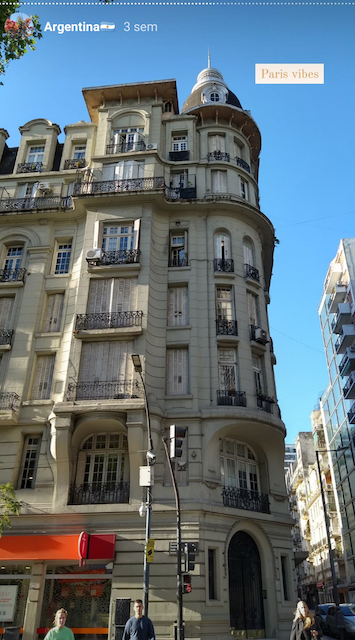
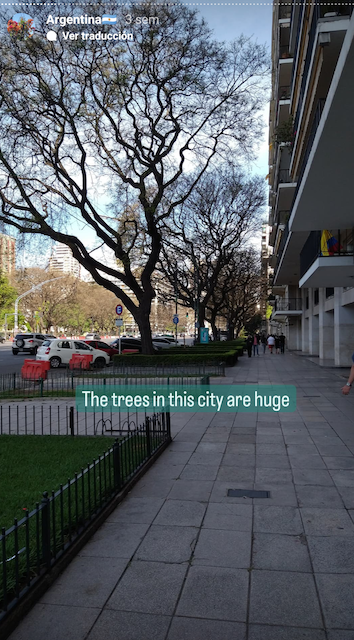
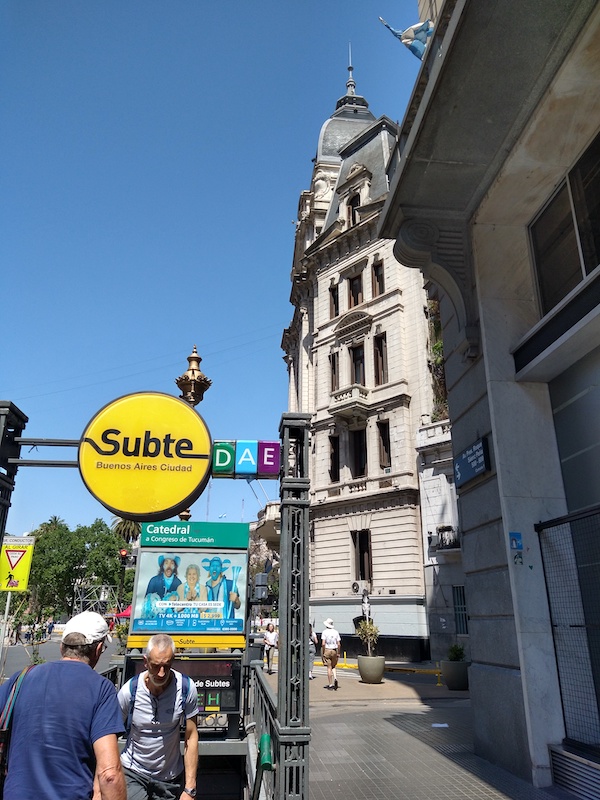

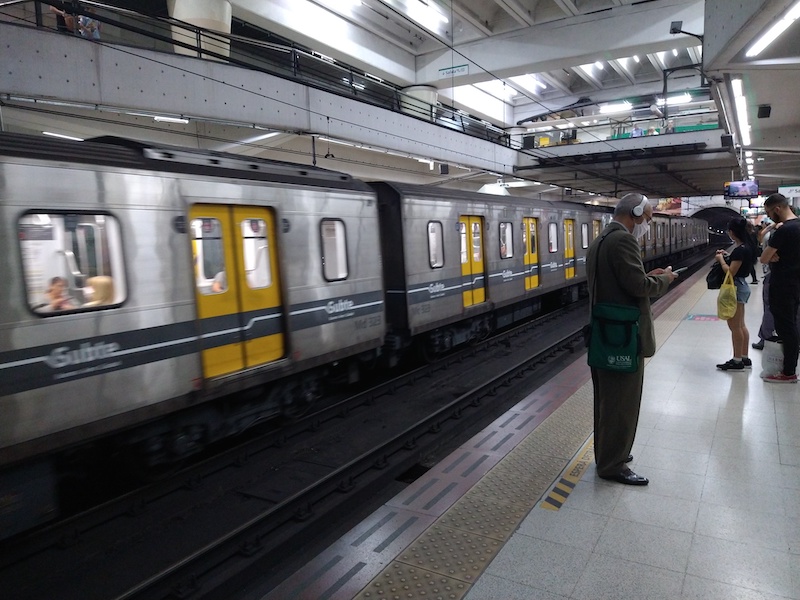
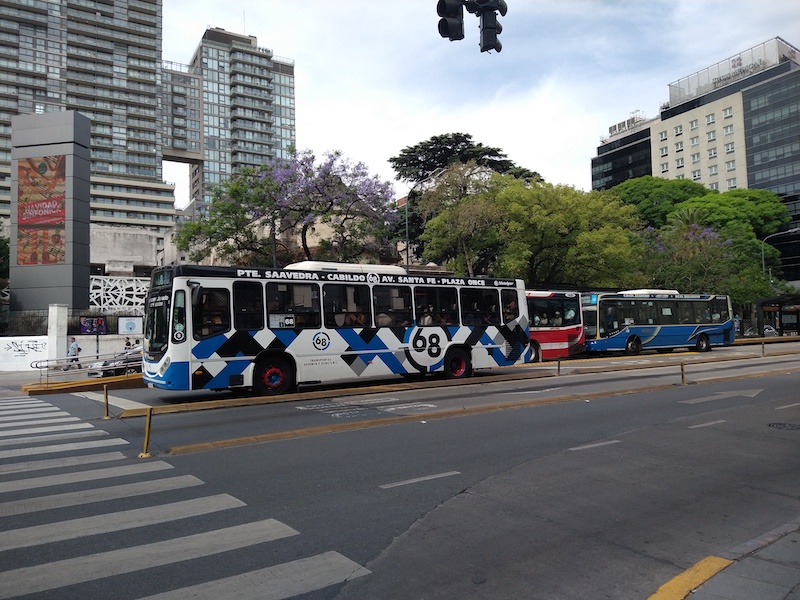

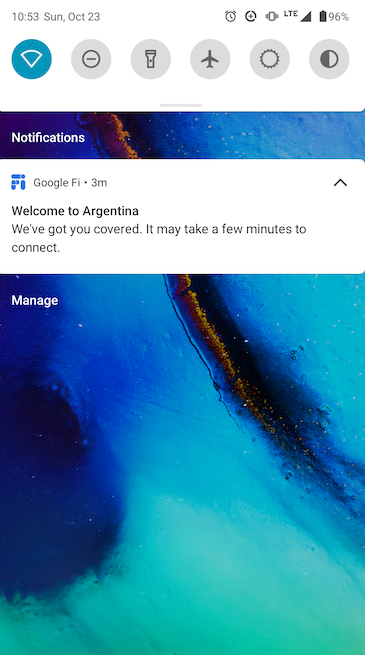

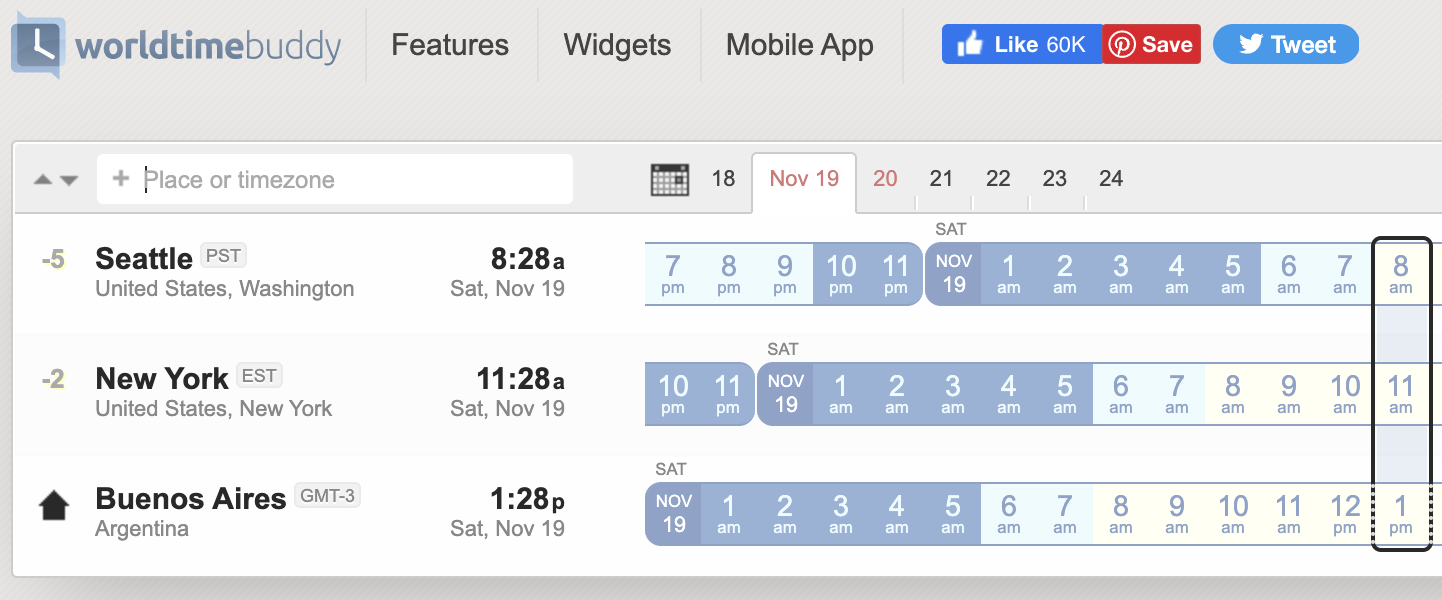

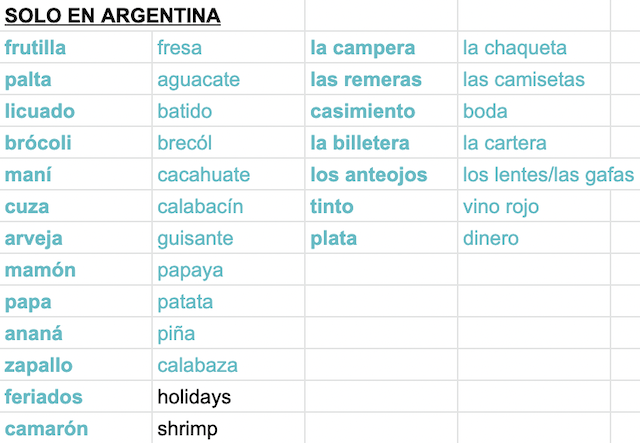


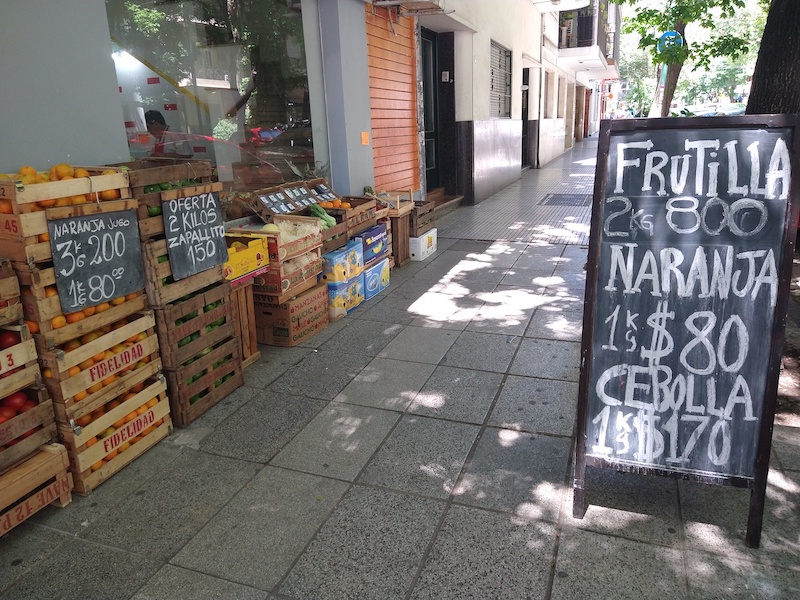
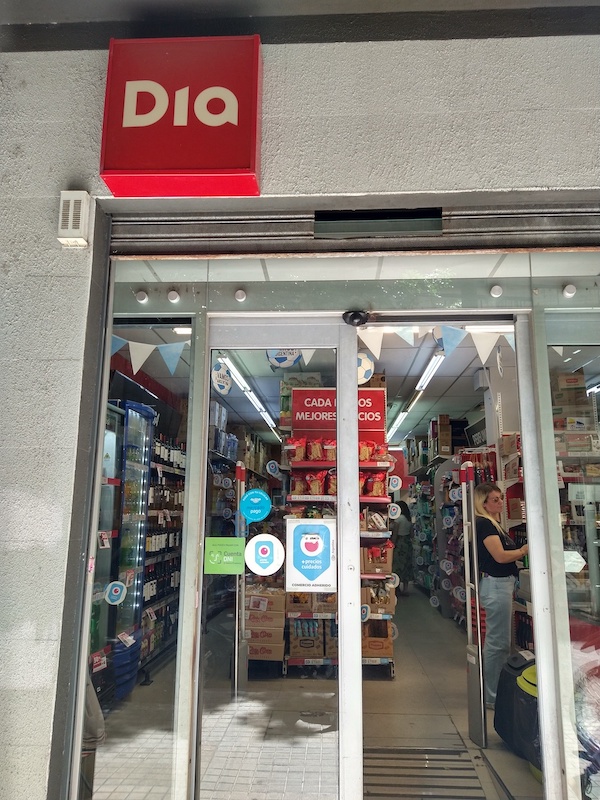

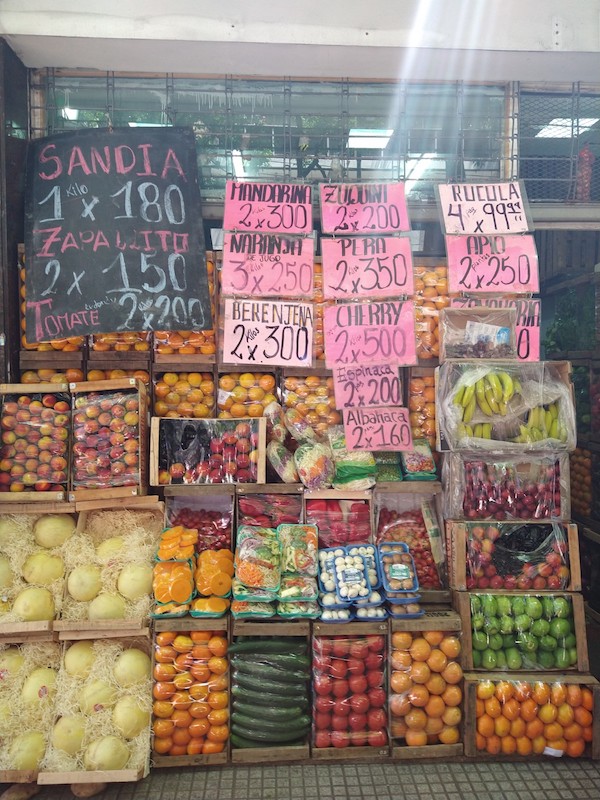

I’ll be in Buenos Ares in 2 days!
Unfortunately, I’ll just be in the airport, changing flights from Santiago to Ushuaia on my way down to Antarctica.
This makes me wish I was taking more time. Still, I guess I can always come back!
OH WOW!!! That’s so cool. Enjoy Antarctica 🙂 !
Another great synopsis. Thanks for all the information. It def sounds like a country worth visiting.
I’m so glad you enjoyed it! And yeah it’s a lovely place.
Fantastic write-up! You make it sound wonderful. I’ve been slowly adding South American places to my travel wish list, and this definitively made the case for Buenos Aires. Love all the photos and the price point comparisons.
Loved the write up Purple. I also really liked the inclusion of the Spanish language tips and differences 🙂 Wow, what a great time on a small amount spent!
Thank you! And I’m so glad those tips were helpful 🙂 . And yeah it was a wildly affordable time.
I’m glad it sounds wonderful – I tried to capture the good and the bad (confusing transit signs 🙂 ). So happy the price point comparisons were helpful as well as the photos!
Sounds like you’re having a great time, Purple! Thanks for posting this update. I’ve never been to South America (or the Southern Hemisphere in general!) but I’d love to go. I just need to work on my Spanish so I can talk to people (talking to people who live in foreign countries is one of the highlights of going somewhere new, in my opinion).
And speaking of Spanish, I love the list of words that are different in Argentina. I remember pineapple as piña from Spanish class, of course, but I think ananá is fascinating. In Russian, pineapple is ананас (ananas), with the stress on the final syllable. Looks like those words come from the same root, which is fascinating. I haven’t encountered much overlap between Russian and Spanish thus far. 🙂
It’s totally a highlight and also necessary for BA if you’re alone. Good luck with your Spanish learning! And that’s so interesting about Russian – I wish I has better at linguistics and had done more than a semester in college 🙂 .
in Norwegian the word for pineapple is ananas, with the stress on the first syllable.
That’s so interesting! Now I am getting curious about where this word root originated… we have 3 different language groups represented (Romance, Slavic, and Germanic). So cool!
We need a full on investigation! Who’s good at linguistics here 🙂 ??
That’s so interesting!
Totally gave me a new perspective on Buenos Aires, thank you so much! You’re right about the travel blogs—they had basically led me to cross it off the list because I’m not interesting in being on high alert 24/7 when I travel. So, thank you for this!
What was your perspective before 🙂 ? I’m curious. And yeah I’m not sure if BA has changed, if travel blogs are alarmist or what, but it was weird to see the difference between those blogs and my reality.
Wow, Buenos Aires looks fantastic, never been but it looks beautiful and very clean. Wonder if they embrace cryptocurrency down there? I’ve heard places like Argentina and Brazil are really into Crypto, is that the same in Buenos Aires? Anyway, thank you for sharing these beautiful pics, maybe it’s somewhere I need to add to the bucket list!
I didn’t see or hear any indication that they’re into crypto, but I did see 1 small subway ad about it, but I see those in the US too so I’m not sure that indicates anything other than someone trying to sell their coin. And thank you!
Hey, Purple! BA seems gorgeous and wildly affordable. Are there any indications that crime is going up in the city with all of their inflation? I think BA could be a great escape from the Texas heat for us this summer, but I’m worried about their economic situation, especially since it changed so much just in the time that you were there. TIA!
Hi! I didn’t see any indications of that personally, but I’m just one person 🙂 . They’ve been going through wild inflation for a long while now and from what I heard from locals it’s kind of the norm/expected at this point unfortunately. If crime hasn’t increased that might be why.
excellent and accurate review!
only two critiques: you swapped the meaning of 9 and 11 in a phone number, and we are not going through an economic crisis, we ARE an economic crisis!
PS we are famous for being presumptuous but ALSO for our self-deprecating humor… go figure
Oh no! Thanks so much for letting me know – I’ve updated the 9 and 11 information. And very good to know. – thank you.
Hi Purple and thanks for this complete and accurate report. I have just been there in December 2023 and I can tell about security that Buenos Aires is another massive, huge city. So it is all the same with these big cities. If you read your embassy´s recomendations you´ll see that it´s not as dangerous. Just be aware of the way most common roberies happen.
Regarding Buenos Aires City´s architecture, if you allow me Purple, I would like to add some details after taking a beautiful architecture tour. Buenos Aires has plenty of diverse styles and designs, cutting edge constructions mixed with age-old landmarks from colonial times. Some of the buildings were designed from the 1800s when Buenos Aires city’s construction was enormously impacted by italian workers, to be followed by the luxurious engineering of the 1900s. In those times, art nouveau and art decò styles were applied in many of the boulevards, buildings and parks designed by european landscapers.
During those times, a large number of Buenos’ Aires most sumptuous houses, lodgings and palaces were built. On the contrary, the last works can be seen in the modern and picturesque neighborhood of Puerto Madero, plenty of contemporary and state-of-the-art constructions. So, I suggest visiting a large area inside the city with a knowledgeable guide. I should recommend a tour I took with the friendly people of Kangoo Tours Buenos Aires who planned a special itinerary according to our interests. Here is their website: https://kangootours.wixsite.com/tours/architecture-tour-buenos-aires